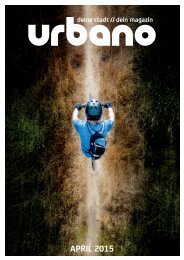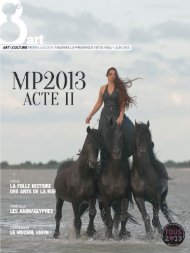Life Nature Magazine
themed ‘Dusk until Dawn’. These times are to me, some of the most exciting to experience wildlife. When I can make it out of bed in time for dawn, the chorus of birds chattering and singing above me makes the wrestle with my tiredness all worth it. As sun sets, some of the most secretive animals come out of their day time hiding places. Foxes and badgers can be seen by the lucky, and bats’ sonar can be heard with a handy bat detector. The time between dusk and dawn is fascinating too. Whilst most of us are tucked up in bed asleep, many animals are exploiting this quieter period, with multitudes of adaptations allowing them to use the darkness to their advantage. From this issue, many of the original team, including myself, are ‘phasing out’. We’re looking for new team members – see the careers section for more information on how to get involved. Whilst some of us will still be involved in the next issue, we’ll be taking less on, so we’d like to thank
themed ‘Dusk until Dawn’.
These times are to me, some of
the most exciting to experience
wildlife. When I can make it
out of bed in time for dawn,
the chorus of birds chattering
and singing above me makes
the wrestle with my tiredness
all worth it. As sun sets, some of
the most secretive animals come
out of their day time hiding
places. Foxes and badgers can
be seen by the lucky, and bats’
sonar can be heard with a handy
bat detector. The time between
dusk and dawn is fascinating
too. Whilst most of us are
tucked up in bed asleep, many
animals are exploiting this
quieter period, with multitudes
of adaptations allowing them
to use the darkness to their
advantage. From this issue,
many of the original team,
including myself, are ‘phasing
out’. We’re looking for new
team members – see the careers
section for more information
on how to get involved. Whilst
some of us will still be involved
in the next issue, we’ll be taking
less on, so we’d like to thank
You also want an ePaper? Increase the reach of your titles
YUMPU automatically turns print PDFs into web optimized ePapers that Google loves.
NEW IN SCIENCE FROM DUSK UNTIL DAWN AUTUMN ISSUE<br />
Magnetic eyes and iron beaks:<br />
<br />
Image: Lauren Stevens, 2013; Diagrams: Georgia Cass, 2013.<br />
Finding your way in the dark is always a challenge. Whether you’re a bat<br />
catching insects in a dense tropical rainforest, or a badger digging your sett<br />
in an English woodland, sensitivity in darkness is essential to your survival.<br />
Exploitation of the darkest hours has led<br />
to a huge range of adaptations designed<br />
to increase an animal’s ability to<br />
navigate at night. Purely nocturnal creatures<br />
tend to sport more obvious adaptations to<br />
living in darkness; the giant eyes of the bush<br />
baby are a prime example. However, for<br />
those who need to be active night and day,<br />
migrating birds for example, the transition<br />
can be tricky.<br />
Initial research suggested that birds, such as<br />
homing pigeons, use landmarks imprinted<br />
<br />
Other birds like European robins are known<br />
to use a combination of landmarks and the<br />
position of the sun and stars as a guide.<br />
Recent studies have had some fascinating<br />
insights into how birds on the wing navigate<br />
at night. It has now been suggested that<br />
the retinas in the eyes of migratory birds<br />
are in fact able to not only detect light, but<br />
<br />
<br />
wintering and breeding grounds. Such an<br />
anatomical feature requires incredible levels<br />
of sensitivity and detection of light at low<br />
levels, and unfortunately, doesn’t come with<br />
a simple explanation. How can the retina<br />
detect the magnetic pull of the earth? Two<br />
main theories have developed.<br />
Light-dependent navigation<br />
One such theory involves blue-light-sensitive<br />
photoproteins known as cryptochromes.<br />
Some scientists believe these molecules to be<br />
key in the detection of the earth’s magnetic<br />
<br />
magnetoreceptors at a bird’s disposal. The<br />
cryptochromes, of which birds are known<br />
<br />
send the information along ganglion nerve<br />
cells to the brain, where it can be processed<br />
into directional information that the bird can<br />
respond to. These ganglion cells have been<br />
found to be particularly active in migratory<br />
birds such as garden warblers and European<br />
robins when tested under moonlightstrength<br />
white light. Although this ‘compass’<br />
is dependent on the presence of light, it is<br />
extremely sensitive and has been found to<br />
function at light intensities equivalent to<br />
that of a ‘partly clouded moonless night’.<br />
Impressive, when you consider your<br />
<br />
unfamiliar, lightless expanses.<br />
In addition, an area in the front of the brain,<br />
known as ‘Cluster-N’ has been shown to<br />
be highly active when birds are orientating<br />
through night-time migration. The lightdependent<br />
information is transmitted from<br />
the retina in the eye to Cluster-N, which<br />
is activated under low light intensities.<br />
Studies on European robins have shown<br />
that deactivation of this cluster renders their<br />
magnetic compass useless.<br />
Magnetite-based navigation<br />
Another theory on the ability of migratory<br />
birds to navigate at night involves iron<br />
deposits, found in the upper beak of several<br />
bird species. The migration distance of these<br />
birds range widely from year-round residents<br />
such as pigeons, to long-distance transequatorial<br />
migrants like garden warblers, and<br />
it is therefore thought that iron deposits will<br />
occur in most bird species.<br />
The iron-rich mineral structures were<br />
initially thought to act literally as magnets,<br />
with the metal aligning with the magnetic<br />
pull of the earth. This information was<br />
thought to then be relayed to the brain<br />
by the trigeminal nerve; a primary nerve<br />
connecting the face and brain. Despite<br />
this, experiments severing the trigeminal<br />
nerve found that the birds’ sense of<br />
<br />
recent experiments have severed the nerve<br />
and subsequently relocated the birds up<br />
to 1000km east of their original starting<br />
point. This study showed that cutting the<br />
<br />
their sense of location; birds would continue<br />
as if they had never been moved, and end<br />
up lost, rather than readjusting their course.<br />
It seems therefore that the iron-deposits<br />
<br />
‘compass sense’ - sense of direction, of a bird,<br />
<br />
their sense of location.<br />
Neither of these theories provides a complete<br />
explanation of how birds navigate at night.<br />
As with many aspects of biology, it is likely<br />
that no one theory can explain all of the<br />
variation in the adaptations that we see.<br />
Essentially it seems probable that both<br />
the light-dependent and magnetite-based<br />
theories work together; depending on the<br />
light available both mechanisms will work<br />
to send directional information to the brain,<br />
with the iron-based clusters only activated at<br />
low light intensities.<br />
The avian eye and<br />
the magnet effect<br />
Directional information provided by<br />
<br />
the bird’s eye by chryptochromes. It is<br />
thought that light absorption generates<br />
radical pairs within chryptochromes<br />
in the retina which are determined by<br />
molecule orientation in relation to the<br />
<br />
iris<br />
lens<br />
cornea<br />
The earth’s<br />
<br />
gives migrating<br />
birds their sense<br />
of direction, or<br />
‘compass sense’.<br />
N<br />
retina<br />
optic nerve<br />
So next time you’re following your Sat-Nav<br />
in the dark, or wandering home from the<br />
pub late at night, spare a thought for these<br />
<br />
miles a year whilst using nothing but their<br />
fantastically clever, built-in GPS.<br />
Georgia Cass, Alumnus of<br />
the University of Exeter,<br />
Cornwall Campus<br />
9

















